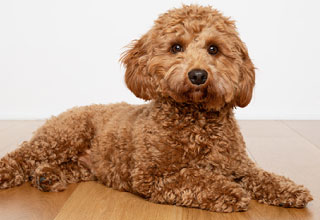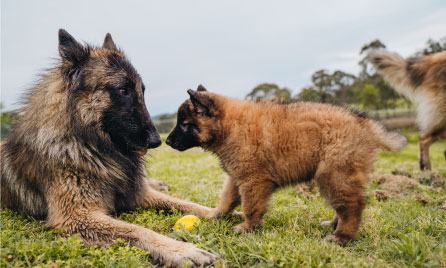- text
-
† Offer available to new Everyday Pet Insurance policyholders, and is limited to 1 membership per eligible policy. The free membership offer (valued at $199p.a) is from the date of your policy commencement, provided your Everyday Pet Insurance policy remains active. You are not eligible to redeem the free membership subscription for cash or credit. VetAssist is a separate subscription based service to the Everyday Pet Insurance product, and is provided independently by Everyday Insurance third party service provider, VetChat Services Pty Ltd (VetChat). Click here for full VetAssist Service terms and conditions. Everyday Insurance reserves the right to vary or remove this offer at any time and will provide reasonable notice of any such changes.
How to groom my dog at home.
Grooming helps your canine friend look their best, but more importantly, feel their best. Grooming removes pollens, dead skin, loose hairs, grass seeds, and tangles from your dog's coat. It prevents painful matting of the coat and avoidable skin issues, and ensures their coat is clean and healthy.
Establishing a Grooming Routine: Regular grooming is not just about aesthetics; it's crucial for your dog's overall health and well-being, especially for long-haired breeds. Start grooming your dog early in their life, using positive reinforcement techniques to make it an enjoyable bonding activity and part of their routine. This will help your dog associate grooming with positive experiences.
Help your dog to love grooming time and to be comfortable with all parts of the body that are required to be groomed.
Step-by-step guide to grooming your dog at home:
Related articles:
- text
-
Everyday Pet Insurance policies entered into for the first time prior to 17 July 2023 and subsequent renewals of those policies are issued by The Hollard Insurance Company Pty Ltd ABN 78 090 584 473, AFSL 241436 (Hollard), arranged and administered by PetSure (Australia) Pty Ltd ABN 95 075 949 923, AFSL 420183 (PetSure) and promoted and distributed by Hollard’s Authorised Representative (AR) Woolworths Group Limited ABN 88 000 014 675, AR 245476 (Woolworths). Everyday Pet Insurance policies entered into for the first time on or after 17 July 2023 and subsequent renewals of those policies are issued by PetSure and promoted and distributed by PetSure’s AR, Woolworths. Any advice provided is general only and does not take into account your individual objectives, financial situation or needs. Please consider the Product Disclosure Statement (PDS) to ensure this product meets your needs before purchasing, or choosing to continue with the product. PDS and Target Market Determination available at insurance.everyday.com.au/pet-insurance.





